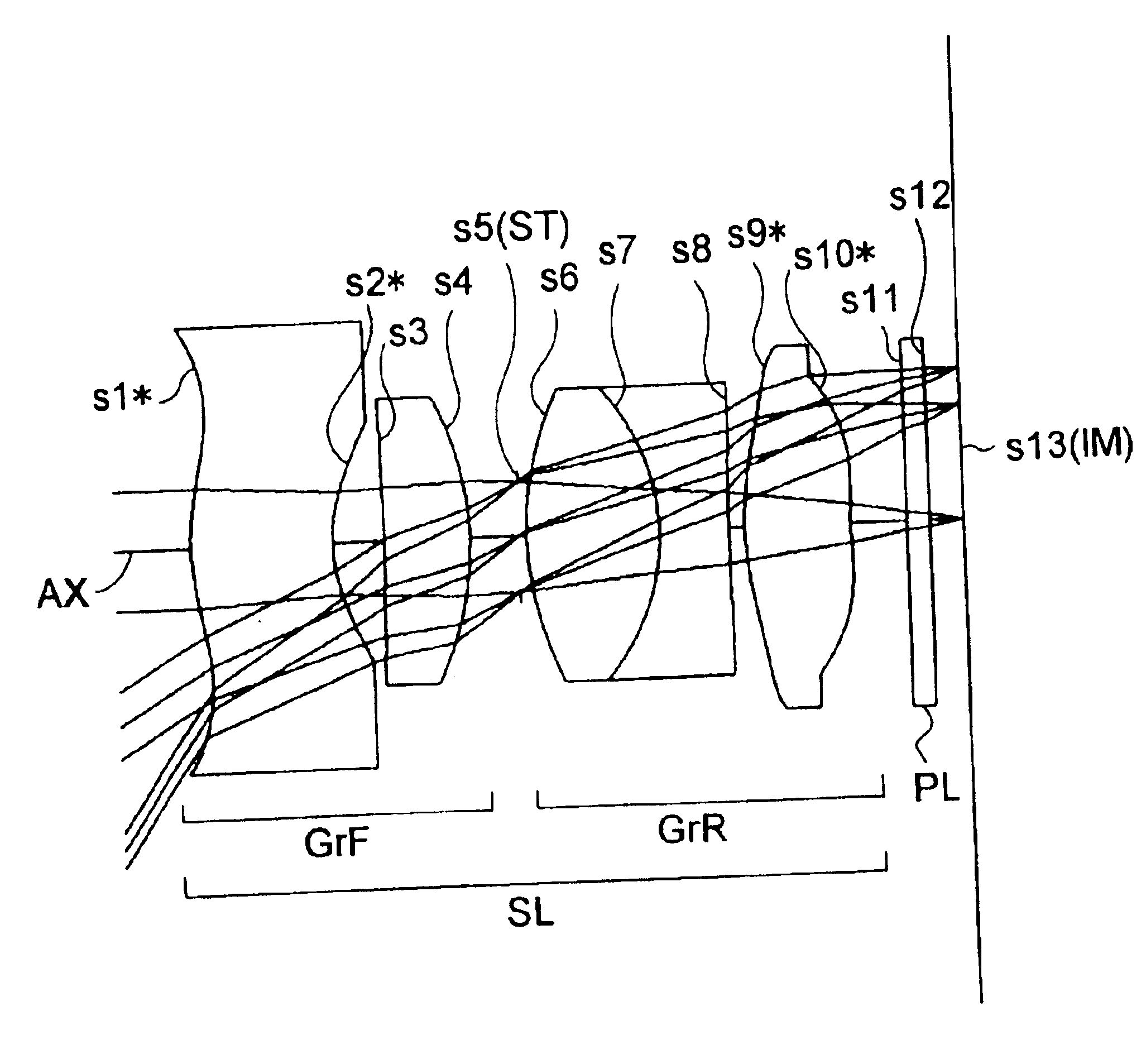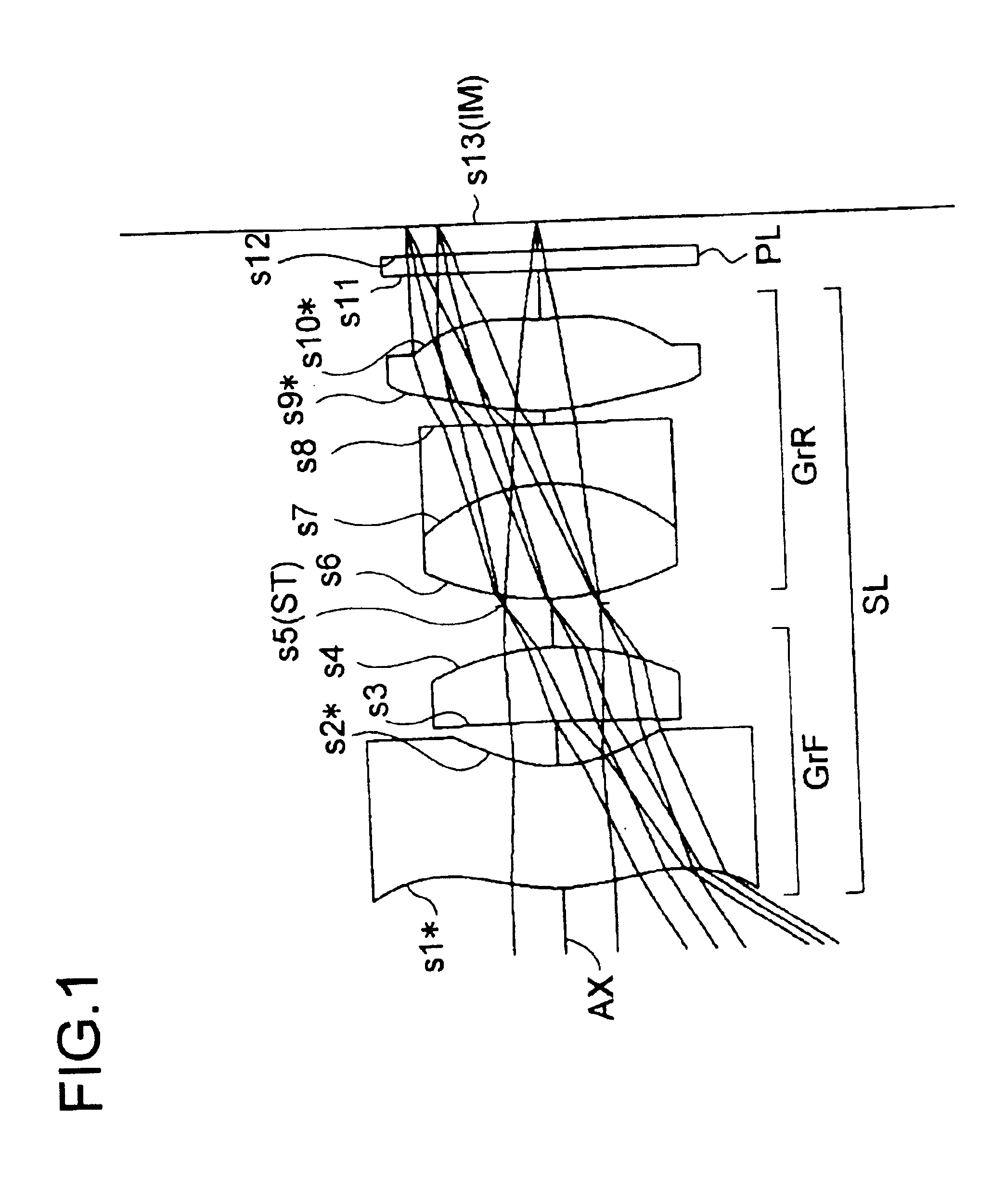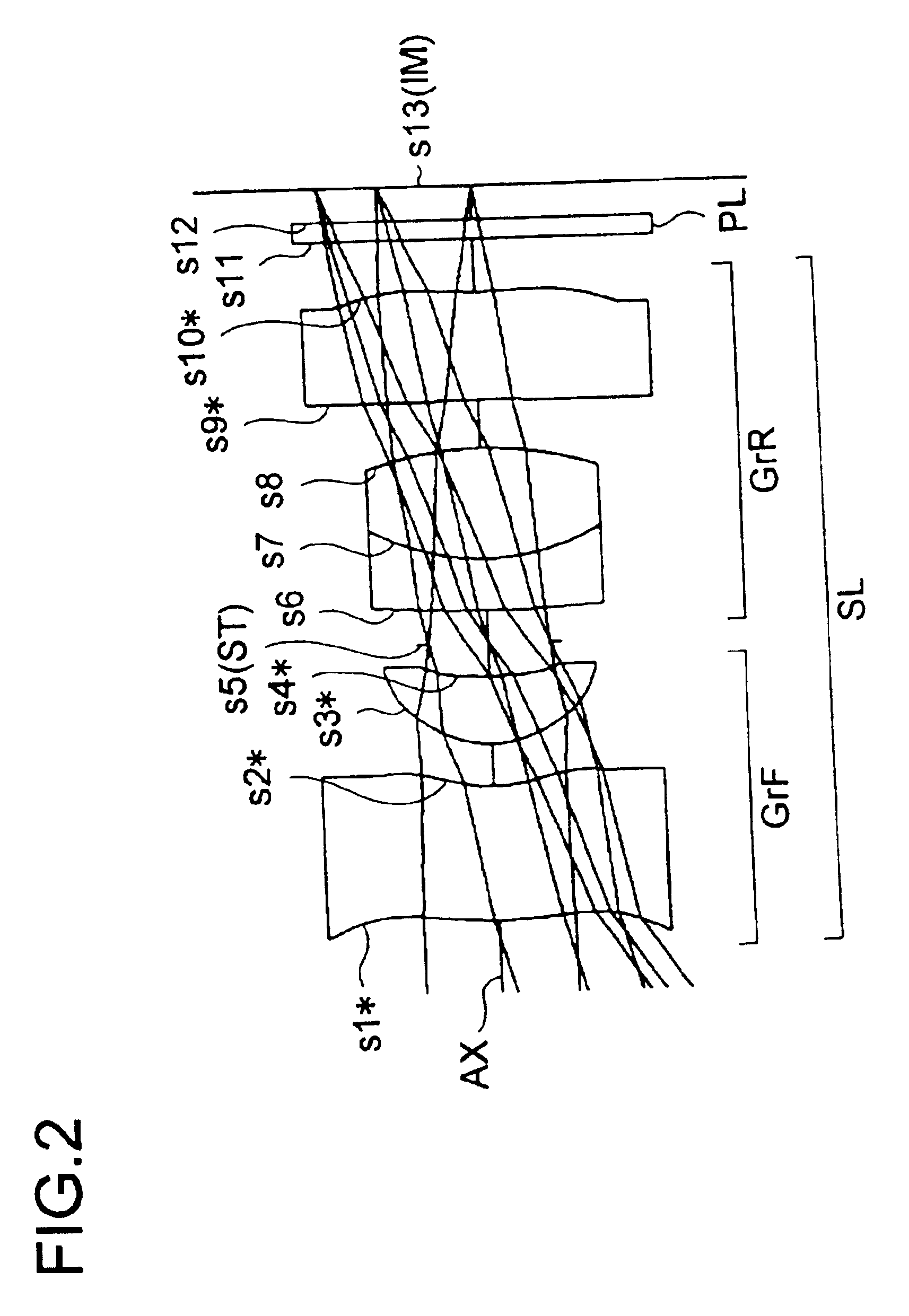Image-taking apparatus, and camera and camera system incorporating it
a technology which is applied in the field of image-taking apparatus and camera system incorporating it, can solve the problems of high cost, large amount of information, and high cost of high-resolution image sensor, and achieve the effect of large apertur
- Summary
- Abstract
- Description
- Claims
- Application Information
AI Technical Summary
Benefits of technology
Problems solved by technology
Method used
Image
Examples
examples
Hereinafter, practical examples of the optical construction and other features of image-taking apparatuses embodying the present invention will be presented with reference to their construction data and other data. Examples 1 to 7 presented below are numerical examples corresponding to the first to seventh embodiments, respectively, described hereinbefore, and therefore the optical construction diagrams (FIGS. 1 to 7) of the first to seventh embodiments also show the lens construction, optical path, and other features of Examples 1 to 7, respectively.
Tables 1 to 7 show the construction data of Examples 1 to 7, respectively. In the construction data of each example, si (i=1, 2, 3, . . . ) represents the i-th surface as counted from the object side (the last surface is the image surface IM), ri (i=1, 2, 3, . . . ) represents the radius of curvature (mm) of the surface si, di (i=1, 2, 3, . . . ) represents the axial distance (mm) between the i-th surface si and the (i+1)th surface si+1...
PUM
 Login to View More
Login to View More Abstract
Description
Claims
Application Information
 Login to View More
Login to View More - Generate Ideas
- Intellectual Property
- Life Sciences
- Materials
- Tech Scout
- Unparalleled Data Quality
- Higher Quality Content
- 60% Fewer Hallucinations
Browse by: Latest US Patents, China's latest patents, Technical Efficacy Thesaurus, Application Domain, Technology Topic, Popular Technical Reports.
© 2025 PatSnap. All rights reserved.Legal|Privacy policy|Modern Slavery Act Transparency Statement|Sitemap|About US| Contact US: help@patsnap.com



